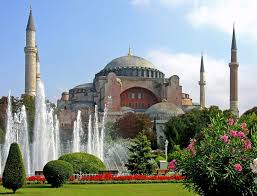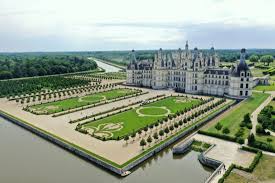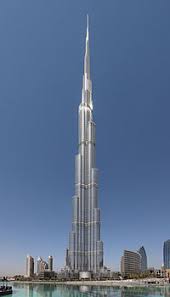By Rachel D. Knepp, Art & Design Blog Contributor
From ancient stone monoliths to futuristic skyscrapers, architecture tells the story of civilizations, cultures, and creativity through the ages. Each landmark is more than just a structure—it’s a reflection of human ambition, artistry, and the desire to leave a mark on the world. Whether you’re a traveler with a passion for design or an armchair adventurer fascinated by global aesthetics, these must-visit architectural wonders are sure to inspire awe and admiration.
Below, I’ve curated a list of some of the world’s most iconic architectural masterpieces—spanning continents, styles, and centuries.
1. Sagrada Família — Barcelona, Spain

Architect: Antoni Gaudí
Style: Catalan Modernism, Art Nouveau, Gothic Revival
A masterpiece still under construction over a century after it began, the Sagrada Família is a soaring basilica blending Gothic drama with sinuous Art Nouveau forms. Gaudí’s organic motifs and complex symbolism make this not only a religious monument but also a poetic expression of nature and faith. The kaleidoscopic stained glass, intricate facades, and dizzying towers make it a must-see for design enthusiasts.
2. The Great Wall of China — Northern China

Built By: Various dynasties between 7th century BC and 16th century AD
Style: Ancient military architecture
Stretching over 13,000 miles, the Great Wall isn’t just a feat of military engineering—it’s a breathtaking example of endurance, purpose, and design adapted to rugged landscapes. Built from stone, brick, tamped earth, and wood, this ancient wonder draws millions of visitors who hike its winding, mountainous paths to witness history etched in mortar.
3. Fallingwater — Pennsylvania, USA

Architect: Frank Lloyd Wright
Style: Organic architecture
Fallingwater exemplifies Wright’s philosophy of harmony between man and nature. Built partly over a waterfall, the house seems to grow out of the rock and forest around it. Its cantilevered terraces and seamless integration into the landscape continue to influence architects and environmental designers worldwide.
4. The Taj Mahal — Agra, India

Architect: Ustad Ahmad Lahauri (attributed)
Style: Mughal architecture
Commissioned as a mausoleum for the emperor’s beloved wife, the Taj Mahal is the embodiment of love in marble. Its symmetrical design, delicate inlay work, and graceful minarets reflect Islamic, Persian, and Indian influences. At sunrise and sunset, the white marble changes hue—proof of the building’s living, breathing artistry.
5. The Sydney Opera House — Sydney, Australia

Architect: Jørn Utzon
Style: Modern Expressionism
Few buildings are as instantly recognizable as the Sydney Opera House. With its billowing sail-like shells rising from the harbor, it redefined 20th-century architecture. The structure is an engineering marvel and a cultural symbol, demonstrating how art and innovation can shape national identity. (Side note: per the musicians who play there, it is too small for the orchestra. It is still an interesting design.)
6. Hagia Sophia — Istanbul, Turkey

Architects: Isidore of Miletus and Anthemius of Tralles
Style: Byzantine
First a cathedral, then a mosque, and now a museum-turned-mosque again, Hagia Sophia is a palimpsest of religious and architectural history. Its immense dome, once the largest in the world, floats above an intricate space filled with golden mosaics, towering columns, and ethereal light—a true marvel of ancient engineering and sacred design.
7. Petra — Jordan

Architects: Nabataeans (circa 5th century BC)
Style: Rock-cut architecture
Hidden in the rose-red cliffs of southern Jordan, Petra is an ancient city carved directly into sandstone. The famous façade of Al-Khazneh (the Treasury) is just the beginning—temples, tombs, and staircases emerge from the stone like a dream. This UNESCO World Heritage Site reflects the ingenuity of a civilization that blended Hellenistic architecture with desert resources.
8. Château de Chambord — Loire Valley, France

Architect: Domenico da Cortona (attributed), influenced by Leonardo da Vinci
Style: French Renaissance
This 16th-century castle is the epitome of French grandeur. Its double-helix staircase (rumored to be designed by Da Vinci), symmetrical towers, and elaborate roofline resemble a sculpture more than a residence. A fusion of medieval and classical elements, Chambord stands as a testament to royal ambition and artistic flair.
9. Burj Khalifa — Dubai, United Arab Emirates

Architect: Adrian Smith (Skidmore, Owings & Merrill)
Style: Neo-futurism
Currently the tallest building in the world, the Burj Khalifa pierces the desert sky at over 828 meters (2,717 feet). Its tapering silhouette is inspired by Islamic architecture and the regional desert flower, while its cutting-edge engineering redefines what’s possible in vertical design. It’s a symbol of 21st-century ambition and global luxury.
10. Machu Picchu — Andes Mountains, Peru

Built By: The Inca Empire (15th century)
Style: Incan architecture
This mysterious citadel, perched among misty peaks, blends perfectly with its mountainous terrain. The dry-stone construction, astronomical alignments, and agricultural terraces reveal the sophisticated planning of the Inca civilization. Machu Picchu offers not just panoramic beauty, but a deep connection to cultural heritage and indigenous wisdom.
Design Traveler’s Takeaway
Each of these landmarks transcends brick and mortar to tell a deeper story—of love, power, spirituality, and innovation. Exploring architectural wonders isn’t just about admiring structures; it’s about experiencing how human imagination reshapes the environment, adapts to challenges, and expresses cultural identity.
Whether you’re plotting your next journey or designing your dream space, let these masterpieces inspire you to think boldly, build meaningfully, and explore passionately.
Bonus Tips for Architectural Sightseeing:
- Go early: Beat the crowds and capture the best light.
- Look up: So much detail is in the ceilings, domes, and rooflines.
- Sketch or journal: Writing or drawing your impressions can deepen appreciation.
- Ask questions: Take guided tours or download audio guides for deeper insights.
- Visit at night: Many landmarks are beautifully lit after dark.
Have you visited any of these wonders, or is one at the top of your travel list? Share your experiences or dream destinations in the comments below!
#ArchitecturalWonders #DesignInspiration #WorldLandmarks #TravelAndDesign #ArtMeetsArchitecture




